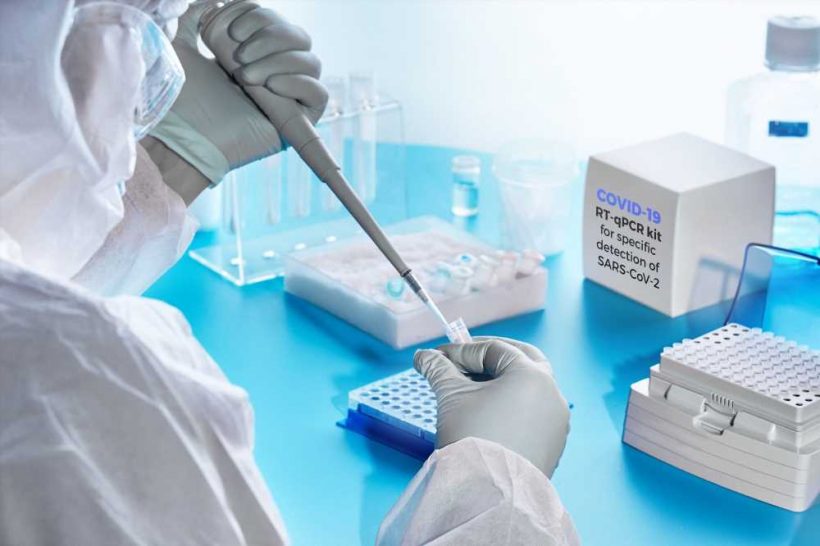In a recent study published in Health Science Reports, researchers estimated the amount of plastic required in a severe acute respiratory syndrome coronavirus 2 (SARS-CoV-2) diagnostic assay.

Introduction
Virological diagnosis of coronavirus disease 2019 (COVID-19) is performed according to either viral genomic or antigen detection. These methods, along with transport packaging and dedicated reagents, need plastic usage in amounts that may appear negligible individually but are very high in the context of a pandemic.
Studies have remarked on the ecologically non-virtuous use of plastics concerning their manufacture from fossil hydrocarbon materials that contribute to global warming, as well as their disposal, which results in major microscopic and macroscopic pollution. Furthermore, the recent detection of plastic microparticles in human blood has highlighted the magnitude of this pollution and is a major concern for world leaders.
About the study
In the present study, researchers investigated the amount of plastic required in a COVID-19 diagnostic antigen or molecular assay.
The team employed a simple method to evaluate the amount of plastic required for a COVID-19 diagnostic test without considering the plastic involved in transporting the samples and the plastic used in personal protective equipment (PPE). The team weighed the reagents utilized to obtain a polymerase chain reaction (PCR) or antigen test result in the hospital. A total of 3,62,000 PCR tests for COVID-19 detection were performed in the team’s laboratory in 2021.
Results
The study results showed that every ready-to-use antigen assay comprised approximately 20g of plastic. The PCR assay had almost 0.2g plastic per sample for every plastic microwell plate used to assess a nasopharyngeal sample containing almost 18g plastic per sample. Approximately 4g of plastic per sample was found in the nucleic acids extracted from the sample.
Moreover, the team found 4g of plastic per sample in the microwell plate and 7.8g of plastic per sample in the micropipette tips.
Furthermore, the PCR process consumed almost 30g of plastic per sample. The total PCR detections required a total of 10,860kg of plastic. Notably, 7,198,479 antigen tests and 7,002,012 PCR tests performed in the Occitanie region in 2021 required 210 tons of plastic for PCR and 144 tons for antigen tests in total.
Conclusion
The study findings highlight the urgent need to redefine paradigms in the healthcare industry, especially those that influence the usage of raw materials and the disposal of manufactured items while ensuring that processes are environmentally friendly. The standardized method for disposal of organic materials does not inhibit the usage of green raw materials having a smaller effect on the planet.
The researchers suggest that the study implies that several aspects of the present healthcare system need re-examination.
- Mansuy JM, Migueres M, Trémeaux P, Izopet J. (2022). Will the latest wave of the COVID‐19 pandemic be an ecological disaster? There is an urgent need to replace plastic by ecologically virtuous materials. Health Science Reports. doi: http://doi.org/10.1002/hsr2.703 https://onlinelibrary.wiley.com/doi/10.1002/hsr2.703
Posted in: Medical Science News | Medical Research News | Disease/Infection News
Tags: Antigen, Assay, Blood, Coronavirus, Coronavirus Disease COVID-19, covid-19, Diagnostic, Genomic, Healthcare, Hospital, Laboratory, Microparticles, Nasopharyngeal, Pandemic, Personal Protective Equipment, Pollution, Polymerase, Polymerase Chain Reaction, PPE, Reagents, Respiratory, SARS, SARS-CoV-2, Severe Acute Respiratory, Severe Acute Respiratory Syndrome, Syndrome

Written by
Bhavana Kunkalikar
Bhavana Kunkalikar is a medical writer based in Goa, India. Her academic background is in Pharmaceutical sciences and she holds a Bachelor's degree in Pharmacy. Her educational background allowed her to foster an interest in anatomical and physiological sciences. Her college project work based on ‘The manifestations and causes of sickle cell anemia’ formed the stepping stone to a life-long fascination with human pathophysiology.
Source: Read Full Article
